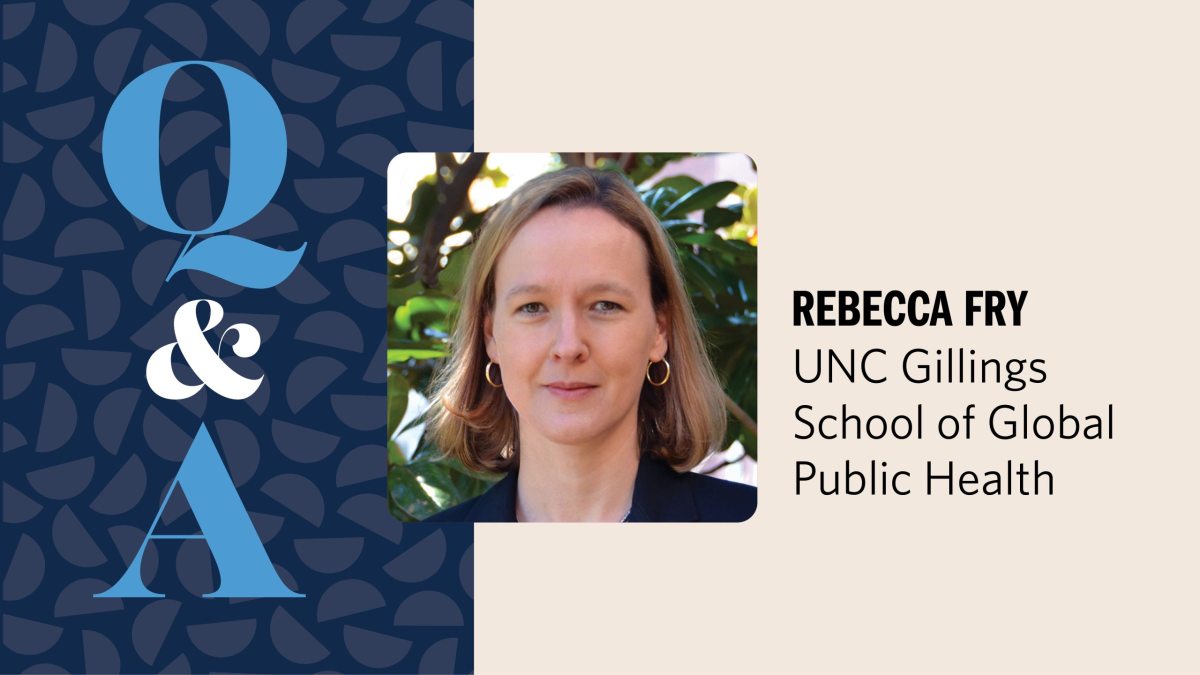Carolina expert explains lead in water
Environmental health scientist Rebecca Fry discusses water testing, lead effects and resources for faculty, staff and students.

Carolina Environment, Health and Safety has kept faculty, staff and students updated on lead in campus drinking water since the discovery of detectable lead in three drinking fountains in Wilson Library earlier this semester.
Since then, the University has taken a phased approach to test fixtures — water fountains, kitchen sinks, ice machines, etc. — with the highest likelihood of containing lead based on their age or the age of the building, including residence halls. The first two phases have been completed and phase three is in progress.
- Phase One — Water fixtures that potentially contain lead components based on their age and construction (COMPLETED).
- Phase Two — Water fixtures in buildings that were built in or prior to 1930 (COMPLETED).
- Phase Three — Water fixtures in buildings that were built in or prior to 1990 (IN PROGRESS).
The campuswide effort has brought together multiple units and faculty experts, like Rebecca Fry, Carol Remmer Angle Distinguished Professor in Children’s Environmental Health and associate chair of the environmental science and engineering department in the Gillings School of Global Public Health, who has volunteered her time as a scientific adviser to the University.
Additionally, Fry is director of graduate studies for the curriculum in toxicology and a research professor in the pediatrics department. She is also director of both the Institute for Environmental Health Solutions and the UNC Superfund Research Program. Fry’s research focuses on understanding how environmental exposures and toxic substances are associated with human disease.
Fry recently presented on the campus lead situation at the October Faculty Council meeting to provide expert context for interested colleagues. In the following conversation, she offered further insight into the University’s response and what the campus community should know about lead in drinking water.
What does the campuswide lead testing involve? Why a phased approach to testing?
The lead testing on campus is being overseen by Environment, Health and Safety and follows the U.S. Environmental Protection Agency’s 3Ts guidance. This involves a two-day process. The first day involves flushing the water from the drinking water source for 15 minutes. The second day involves collecting two samples. The first of these, known as the “first draw,” is taken early in the morning before water has been used. This is followed by the second draw sample collected immediately after the first draw. The three-phased approach was selected to strategically prioritize testing of older buildings on campus early in the process.
You’ve helped to get student volunteers involved with the lead testing on campus. Why is this important?
The student volunteers and their efforts on campus to test for lead is valuable for two reasons. First, this is increasing the understanding of the levels of lead in drinking water on campus. Second, this is providing the students with hands-on experience dealing with an environmental science issue. The students have commented that they really appreciate this opportunity to work with the UNC Superfund Research Program to help our community.
I also want to acknowledge the tremendous efforts of Environment, Health and Safety in their initial response once learning about the issue of lead on campus and their continued, strong and large-scale testing of drinking water samples across campus. Environment, Health and Safety is key to tackling this problem on campus, and we appreciate how they have welcomed students into the process.
What does the EPA action level of 15 ppb mean? Why is the University reporting instances of lead detection below the action level?
The EPA established the lead and copper rule that was passed in 1991. This requires water utilities/providers — note that UNC-Chapel Hill is not a water utility — to take action if more than 10% of their customers’ water samples are above 15 ppb, or parts per billion. The reason the University is reporting and taking action on any lead that is below this action level is that lead is a toxic metal. As a result, from the public health and toxicology standpoints, any detectable levels are considered undesirable.
The campus community is understandably worried about this issue. Who is most at risk for lead exposure? What are the options for those who work, study or live in buildings where lead was detected?
Identifying lead on campus is indeed worrisome. We need to continue to come together across campus to identify and remediate this issue. Given that lead and other toxic metals are found in communities across the U.S. and around the world, we are unfortunately not alone in having to deal with these issues. We are uniquely positioned at UNC-Chapel Hill to tackle this issue, because we have multiple well-regarded environmental programs across campus and a leading school of public health.
The populations most at risk of harm due to lead exposure are pregnant women and young children. People who are concerned about whether they have been exposed recently to lead can choose to have their blood tested. There are two locations on campus where this testing is offered. One is Campus Health for students, and the other is the University Employee Occupational Health Clinic for staff.
For those wanting to learn more about the effects of lead, what additional resources do you recommend?
There are resources available here at UNC-Chapel Hill:
There are also resources from other sources, such as the Centers for Disease Control and Prevention and the World Health Organization:




